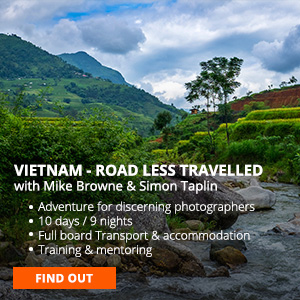How To Be Happy With Your Photos
It's tempting to believe that exciting photos will lead us to being happy and fulfilled as photographers. But in reality it's the other way round.
Consider that being happy with our photos for the level we are at right now, will lead us to take the great photos we all crave.
The place to begin being happy with our photography is to give up expecting to shoot fabulous images.
Have you taken leave of your senses Browne?
Yes, I know it's sounds mad but please bear with me. This is about not being disappointed with our work because that leads to despondency or possibly giving up photography completely.
I'm not for a moment telling you to be complacent and simply accept that the images you shoot are all you can hope for. I'm telling you to be honest and realistic with yourself about your skill level right this moment.
We all have expectations about how our images 'should' look. How bright and happy, moody and dark, or evocative. We know it should have been beautiful and we should be excited to have taken it. When those expectations aren't met we feel upset, let down and often blame our expensive cameras and lenses for not working properly. "This lot cost a fortune so why doesn't it take great photos?"
These massive and unrealistic expectations are helped along by camera makes all suggesting that if we buy their camera, bit of new gadgetry or whatever, then our images will be like the ones in the adverts. What you don't see is the budget for a highly skilled photographer, lighting, models, location etc spent to achieve the image with that particular bit of kit.
A photographer I know very well recently shot some video for a well known brand to promote the video capabilities of one of their cameras. The final advert will probably feature a few seconds of what was a four day shoot involving a crew of five people.
Photography is a big subject. A photographer has to be creative and able to translate their creativity into technical ability in order to capture the images. That's not something that can be learnt in a few days or by watching videos with a coffee.
Musicians, artists, engineers, racing drivers, chefs and anyone else with a high skill level will have taken time to reach their individual level. So be realistic about how much time you have tacken to reach yours. How much practice have you done? How often do you do it? How many courses have you been on?
So I urge you to be a little kinder to yourselves and consider that what you're doing right now is what you're doing right now. If you're starting out set realistic goals for yourself. Photography techniques can be learnt and practised with any subject, anywhere. As you learn these and how to use them together you will evolve as a photographer and the breath taking imagery will begin to flow on it's own.











































